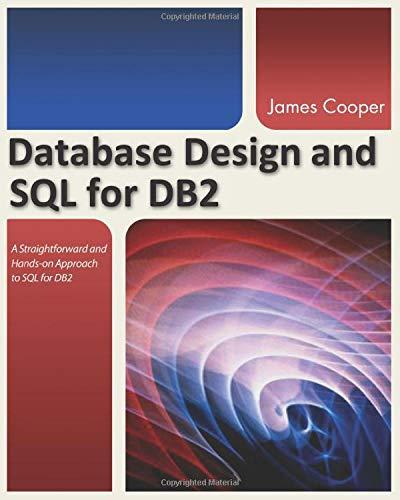Question
Order the following four steps in the application of dynamic programming from first to last Question 1 options: Question 1 (2 points) Order the following
Order the following four steps in the application of dynamic programming from first to last
Question 1 options:
| Question 1 (2 points) Order the following four steps in the application of dynamic programming from first to last Question 1 options:
Question 2 (2 points) In order for dynamic programming to apply to a problem, which of the following properties must that problem have? Select all that apply. Question 2 options:
Question 3 (3 points) Which of the following problems exhibit optimal substructure? (That is, an optimal solution to a problem will contain an optimal solution to subproblems.) Select all that apply. Question 3 options:
Question 4 (3 points) Which of the following problems have the property that they are composed of overlapping subproblems? Select all that apply. Question 4 options:
Rod Cutting and Preliminaries Read section 15.1 before attempting these questions. Question 5 (1 point) Suppose you have a rod of length n. How many different ways are there to cut this up into one or more pieces? (Assume that cuts at different places on the rod that leave you with pieces of the same size are different, as in CLRS text figure 15.2). Question 5 options:
Question 6 (1 point) The rod-cutting problem exhibits optimal substructure - that is, the optimal solution to maximizing revenue for cutting a rod of length n incorporates the optimal solution to some subproblems of cutting a rod of length less than n. (note that this allows the possibility that the optimal solution may not involve cutting the rod at all). Question 6 options:
Question 7 (1 point) There are generally two ways of implementing dynamic programming solutions to problems, which have equal asymptotic time complexities. (The details of the problem may determine which is better in a given situation). What are they? Select two. Question 7 options:
Question 8 (1 point) What is the worst-case asymptotic time complexity (a.k.a. "running time") of the brute-force, recursive solution to the rod cutting problem? Question 8 options:
Question 9 (1 point) What is the worst-case asymptotic time complexity (a.k.a. "running time") of the dynamic programming solution to the rod cutting problem? Question 9 options:
| |||||||||||||||||||||||||||||||||||||||||||||||||||||||||||||||||||||||||||||||||||||||||||||||||||||||||||||||||||||||||
Step by Step Solution
There are 3 Steps involved in it
Step: 1

Get Instant Access to Expert-Tailored Solutions
See step-by-step solutions with expert insights and AI powered tools for academic success
Step: 2

Step: 3

Ace Your Homework with AI
Get the answers you need in no time with our AI-driven, step-by-step assistance
Get Started


